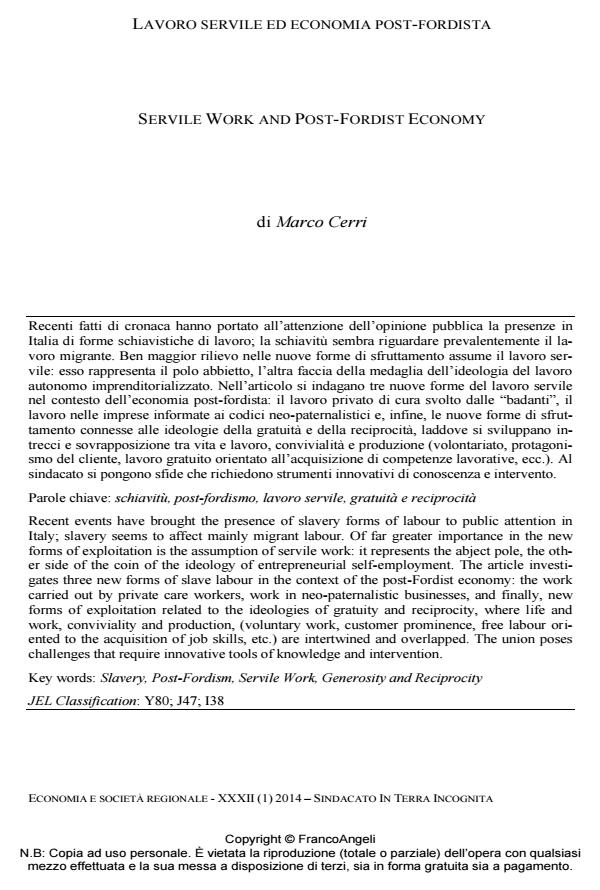Servile work and post-fordist economy
Journal title ECONOMIA E SOCIETÀ REGIONALE
Author/s Marco Cerri
Publishing Year 2014 Issue 2014/1
Language Italian Pages 13 P. 116-128 File size 647 KB
DOI 10.3280/ES2014-001009
DOI is like a bar code for intellectual property: to have more infomation
click here
Below, you can see the article first page
If you want to buy this article in PDF format, you can do it, following the instructions to buy download credits

FrancoAngeli is member of Publishers International Linking Association, Inc (PILA), a not-for-profit association which run the CrossRef service enabling links to and from online scholarly content.
Recent events have brought the presence of slavery forms of labour to public attention in Italy; slavery seems to affect mainly migrant labour. Of far greater importance in the new forms of exploitation is the assumption of servile work: it represents the abject pole, the other side of the coin of the ideology of entrepreneurial self-employment. The article investigates three new forms of slave labour in the context of the post-Fordist economy: the work carried out by private care workers, work in neo-paternalistic businesses, and finally, new forms of exploitation related to the ideologies of gratuity and reciprocity, where life and work, conviviality and production, (voluntary work, customer prominence, free labour oriented to the acquisition of job skills, etc.) are intertwined and overlapped. The union poses challenges that require innovative tools of knowledge and intervention.
Keywords: Slavery, Post-Fordism, Servile Work, Generosity and Reciprocity
Jel codes: Y80; J47; I38
Marco Cerri, Lavoro servile ed economia post-fordista in "ECONOMIA E SOCIETÀ REGIONALE " 1/2014, pp 116-128, DOI: 10.3280/ES2014-001009